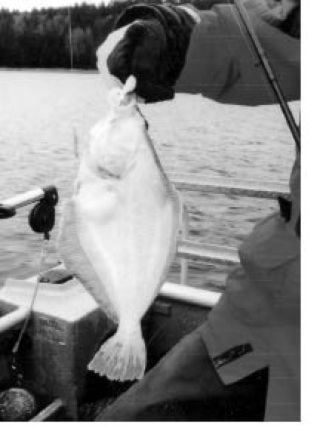No group of outdoor people follow weather patterns more seriously than those who fish our coastal waters during the winter months. The two major forces in the life of these anglers are tides and weather. They have a direct effect on when and where we go fishing.
In planning an outing the conversation on the evening before the event goes something like this: “For the last couple of days the wind has been blowing from the southeast at 15 km/h and it is predicted to swing to the northwest tomorrow morning.”
If you are planning on fishing the waters off the south end of Denman Island a northwest wind is a good omen in that you will be able to fish in the shelter of Denman and Hornby islands. Conversely if the wind is from the southeast you get the full sweep of the Strait of Georgia waters and it is quite challenging. Ideally, when you plan outings try to give yourself one or two days of options to change your plans. This week is a case in point, winds on Monday and Tuesday are storm force, Wednesday is forecast to be relatively calm.
The movements of tides have much to do with most of the activities we do on the saltwater. Depending on how big your boat is, they will dictate when and where you launch your boat. Case in point – it is not easy to launch or take a large boat out of the water at Union Bay during very low tides. This week the low tides are during the evening hours.
The timing of tidal changes has great effects on the feeding patterns of most marine fish. During the hour before and after tide change salmon feed more aggressively, so plan to have your lures in the water during these feeding times. During slack tides is also a good time to fish bottom fish of species such as flounders, halibut, lingcod and rockfish.
Pictured with this article is a Petrale sole, held by Bruce Bell who caught it. It is one of the most common flatfish in local waters. They are described as important commercially because of size and excellent eating quality. Is there something recreational anglers are missing here? You know there may be life after salmon because there are at least 17 species of flatfish that live in coastal waters from Alaska to California.
Prawning has become part of many anglers’ daily fishing excursions over the past few years. If you are new to coastal fishing here are a few simple tips that may help in planning a trip. For bait we use cat food much of the time, filling the bait holders with a mixture of dry and canned tuna for cats. We also add a shot of prawn scent to the bait before it is lowered into the water. Does it work? I am not certain, but we do catch some prawns. We try to set our traps so that they will be in the water during one change of the tide – at least three to four hours. Prawn pullers are nice, but pulling by hand is good exercise. Prawns can be caught in depths varying from 200 to over 400 feet.
Because we travel quite a bit in our prawning trips we never leave a trap overnight. Make certain that when you put your trap in the water you have enough line for the trap to rest on the bottom. Also use lead weights attached to the line near the surface so that the line sinks below your buoy – see the illustration on page 30 of the Tidal Sportfishing regulations.
Crabbing is another angling adventure we enjoy in our coastal marine fishing. Crabs are fished in much shallower waters than prawns so we have easier hauling challenges when your pull the traps. You can buy bait or use the heads of salmon and other fish. Tuna cat food will also work. The same rules are important in putting a weight on your line below the buoy. Comox Harbour is a popular crabbing area in local waters.
Being addicted to watching weather helps create a wise angler.
